How To Think
Thinking Skills
Focusing On HOW Not WHAT To Think
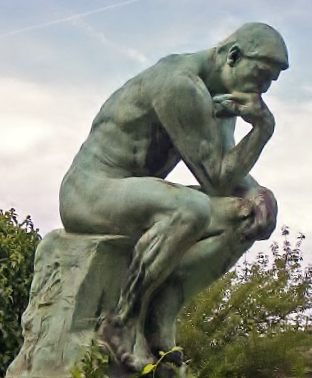
How to think effectively is especially relevant, at the time of writing, as the world slowly emerges from post Covid-19 lockdown and starts to come to terms with the societal, economic and financial consequences.
We are currently living in an age of unreason where:
- Experts are denigrated and ignorance, bias and prejudice is celebrated;
- Woke thinking takes precedence over reasoned debate;
- Virtue signally takes precedence over private philanthropy;
- Intelligent discussion and agreement to disagree and respect for other shades of opinion are denied in the current cancel culture;
- Public debate is hijacked and taken over by group think and mob rule.
All of which provides another very powerful rationale and motivation for learning how to think effectively.
In this article [and the associated articles that follow] we are going to look at a number of ways of improving your cognitive capabilities and provide you with a range of practical tools and resources to do this successfully.
We are going to start the process of understanding and learning how to think effectively with several key reference points
- Focusing On How To Think Not What To Think
- Critical Thinking Skills
- The Strategic Mindset
- Metacognition
- Mental Models
How To Think: [1] Focusing On How To Think Not What To Think
In recent research into the neurology of creative brains, the lead author of the study [Roger E.Beaty] said:
“People who are more creative can simultaneously engage brain networks that don’t typically work together.”
The evidence suggested 3 sub-networks:
- The default mode network involved in memory and mental simulation.
- The salience network which detects important information.
- The executive control network which plays key roles in creative thought.
“It’s the synchrony between these systems that seems to be important for creativity...”
Neuroscientist and Neuropsychiatrist Nancy Andreasen scanned the brains of 13 of the current most famous creative people across various domains and summarised key patterns in the minds of these creative geniuses:
# They have patience and persistence and allow the time
Creative work takes time, often a lot of time, and that requires patience and persistence.
"Isaac Newton's formulation of the concept of gravity took more than 20 years and included multiple components: preparation, incubation, inspiration — a version of the eureka experience — and production...”
[Nancy Andreasen]
# They are largely self-taught
Bill Gates, Steve Jobs, or Mark Zuckerberg were all self-learners preferring to figure things out for themselves.
“Because
their thinking is different, my subjects often express the idea that
standard ways of learning and teaching are not always helpful and may
even be distracting, and that they prefer to learn on their own...”
# They are good at making juxtapositions between dissimilar subjects
Many creative geniuses make connections between things that are unrelated to their main research. They can force relationships where there is none. They make connections where ordinary minds see opposites.
Leonardo da Vinci forced a relationship between the sound of a bell and a stone hitting water, which enabled him to make the connection that sound travels in waves.
“Creativity is just connecting things. When you ask creative people how they did something, they feel a little guilty because they didn’t really do it, they just saw something...” [Steve Jobs]
When presented with a problem, creative people will ask :
- “How many different ways can I look at it?
- “How can I rethink the way I see it?”
- “How many different ways can I solve it?”
They tend to come up with many different responses, some of which are unconventional and possibly unique.
# They are open-minded
Every problem — no matter how apparently simple it may be — comes with a long list of assumptions.
These assumptions must be tested especially the most obvious and the "sacred cows".
They ask "Why!?"
# They are so good, we can’t ignore them
Cal Newport says:
“Until you become good, you don’t have leverage.”
Truly
creative people are always seeking improvement:
- Thomas Edison held 1,093 patents
- Bach wrote a cantata every week
- Picasso made 50,000 works of art in his life.
- Mozart composed over 600 pieces in his lifetime.
- Charles Schulzmade made 17,897 Charlie Brown strips before he died.
- Aside from his paper on relativity, Einstein published 248 other papers.
“On average, creative geniuses aren’t qualitatively better in their fields than their peers, they simply produce a greater volume of work which gives them more variation and a higher chance of originality...”
[Prof. Dean Simonton]
In summary, patience, persistence life long learning and approaching things differently are the keys to high-level creative thinking.
For a fascinating insight into the thought processes of Bill Gates I do recommend the Netflix 3 film series for which this is the trailer:
How To Think: [2] Critical Thinking Skills
What Is Critical Thinking?
“Critical thinking
is the intellectually disciplined process of actively and skillfully
conceptualizing, applying, analyzing, synthesizing, and/or evaluating
information gathered from, or generated by, observation, experience,
reflection, reasoning, or communication, as a guide to belief and
action.” [The Foundation for Critical Thinking]
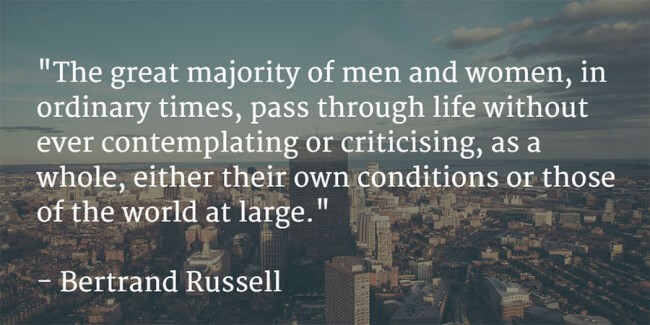
Critical thinking is just deliberately and systematically processing information so that you can make better decisions and generally understand things better.
Ways to critically think about information include:
- Conceptualizing
- Analyzing
- Synthesizing
- Evaluating
That information can come from sources such as:
- Observation
- Experience
- Reflection
- Reasoning
- Communication
And all this is meant to guide:
- Beliefs
- Action
These notes are an extract from an excellent article by Ramson Patterson: 7 Ways to Improve Your Critical Thinking Skills
The "Five Whys Technique" is used to help determine the root cause of a problem by asking the question “Why” five times.
How To Think: [3] The Strategic Mindset
The strategic mindset is focused on the most efficient thinking process to achieve a result.
We are all familiar with that well-known quote from Thomas Edison, with reference to his 3,000 failures before he successfully invented the lightbulb, when he said that:
“Genius is one percent inspiration, and ninety-nine percent perspiration”.
However, usual interpretation of that story suggests dogged persistence and determination was the key to his eventual success. However there was far more to it than just that. Edison didn’t just randomly move from one failed design to another.
He was constantly adapting and refining his ideas:
“I would construct a theory and work on its lines until I found it was untenable... then it would be discarded at once and another theory evolved.”
At each step of the process, he was making intelligent decisions that learnt from the failures and built on the small successes.
A recent study, at the National University of Singapore suggests we might all benefit from the strategic mindset.
While others diligently follow the same convoluted path, people with the strategic mindset are constantly looking for a more efficient route forwards.
“It helps them figure out how to direct their efforts more effectively,” says Patricia Chen who ran the study and the research shows that the strategic mindset may just spell the difference between success or failure.
Thinking about thinking: knowing how to apply the most appropriate cognitive processes to the task in hand.
Our brains process and organize information in a variety of
ways. The core cognitive processes used for learning were first defined by
Albert Upton [a professor at Whittier College] and later refined with David Hyerle. They include:
By deliberately activating
and combining these 8 cognitive processes, and knowing which ones to apply for
different tasks, we understand and interpret the world around us. These thinking processes are built into our brains; we use
them all the time and automatically. But we don’t always use them efficiently. Effective thinkers have good metacognition, they know how to access these different modes of thinking deliberately and apply them to different kinds of tasks.
A mental model is a high level representation, or overview, of how something works. Since it is impossible to keep all of the details of all of the information that you absorb in your brain, you use
models to simplify the complex into understandable and organisable
chunks. Mental models shape
how you reason and how you understand, and they also shape the connections and
opportunities that you see, and also why you consider some things more relevant than others.
Charlie Munger on Mental Models How To Prioritise Learning Mental Models Charlie Munger: Adding Mental Tools to Your Toolbox
How To Think: [4] Metacognition
How To Think: [5] Mental Models
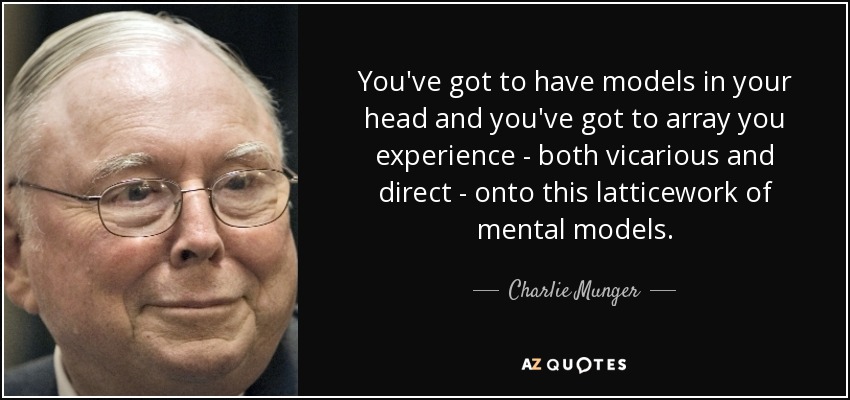
Reflections and Action Points
Reflections
Focusing on “how to think” vs “what to think”
- When you read or hear an argument, pause and ask: “Am I just accepting the conclusion, or am I paying attention to how the reasoning works?”
- Consider a recent belief you held strongly: what was your path to that belief? What thinking habits shaped it?
Critical thinking skills
- Think about a decision you made in the past week: did you actively engage in conceptualizing, analysing, synthesising, evaluating?
- Use the “Five Whys” technique on something that went wrong: what was the root cause you stopped short of asking “why” five times?
Strategic mindset
- When you make plans or set goals, how often do you ask: “Is there a more efficient route?” or “Am I repeating the same path expecting a better outcome?”
- Reflect on a “failure” or setback: did you treat it as a random event, or did you ask what theory you assumed that failed?
- What habits of persistent effort do you have, and how might they benefit from being combined with smart strategy rather than just “more effort”?
Metacognition (thinking about thinking)
- Notice your thinking in the moment: when you’re deciding, when you’re frustrated, when you procrastinate — what cognitive process is in play (defining, comparing/contrasting, sequencing, cause/effect, etc.)?
- Which modes of thinking do you default to (e.g., quick reaction, emotional reasoning) and which are you weak in (e.g., sequencing, comparing/contrasting)?
- When you are stuck or spinning in thought, what kind of thinking would help you step back (metacognitive pause) and pick a better process?
Mental models
- What “models” or frameworks do you use implicitly when you interpret the world (e.g., “fail fast”, “growth mindset”, “everyone should be happy”)?
- Pick one decision you made recently and ask: which mental model guided me? Was it useful or limiting?
- Explore a new mental model (for example: Occam’s Razor, first principles thinking, inversion) and consider how you could apply it to a recurring challenge in your life.
Action Points
Schedule a “mind-thinking check-in”
- Choose a regular cadence (e.g., weekly) and for 10 minutes review your thinking in that period using the reflection prompts above.
- Use a journal or digital note to capture: “What thinking habit served me? What thinking habit hindered me?”
Pick one cognitive process to strengthen
- From the metacognition list (defining, describing, comparing/contrasting, etc) choose one you feel weak in.
- Over the next two weeks, apply it deliberately when you make decisions or analyse information. For example: when reading an article, explicitly write down “What are the similarities and differences between this and my prior view?”
Adopt one new mental model
- Choose a mental model you don’t currently use often (e.g., “second-order thinking”, “inversion”, “probabilistic thinking”) and apply it consciously at least once a day to a problem.
- Try: “What could happen as a result of this decision (second order)?” or “What if the opposite happened (inversion)?” Then record how that reframes your view.
Deepen critical thinking on one belief
- Identify a belief you hold that you have not questioned recently. Use the “Five Whys” method or comparable root-cause approach: ask “Why do I believe this?”, then “Why that?”, repeating until you get to a deeper underlying assumption.
- Then ask: “Is that underlying assumption valid? What evidence do I have?”
Refine a strategic decision
- Take a goal you’re working on. Map the current path you’re taking, then ask: “Is there a more efficient route?
- Am I repeating something that happened before? What can I discard or adjust?”
- Then pick one thing to change this week based on that.
Create a “thinking pause” habit
- When you feel emotional, reactive, or hurried (for example: when traffic makes you frustrated, or your phone distracts you), take a 30-second pause.
- During the pause ask: “Which thinking network is active? Default mode? Executive control? Salience?”
- Then ask: “Which cognitive process do I want to engage deliberately here?”
- This builds the habit of switching from autopilot thinking to intentional thinking.
Try these blogs to stimulate your thinking:
Mental Models - General Thinking Concepts The Metagame Approach To Life - How To Achieve Your Biggest Objectives Understanding Complex Systems Thinking - It's Not Complicated How To Live With Contradiction - Beyond Thought Let Stillness Speak The Wise Advocate - Helping You Achieve The Very Best Outcome What Is Truth - How To Tell A Partial Truth From The Whole Truth? The Metagame Approach to Second Order Thinking - 5 Guiding Principles The Power Of Opposite Thinking Iatrogenics - "Do Something Syndrome" The Eisenhower Box - What Is Important Is Seldom Urgent Mental Models - Human Nature Mental Models - Productive Thinking Applied Rationality and The Scout Mindset Less Is More - Subtractive Solutions The Challenges Of The Road Less Traveled The ETTO Principle - Why Near Enough Can Be Good Enough Discernment - Exercising Good Judgement Mental Models - Physics, Chemistry & Biology Further Reading: Asking The Right Questions Return from "How To Think" to: Home Page How To Think: Thinking Skills
Mental Models - Systems
Mental Models - Numeracy
LATEST ARTICLES
Staying Committed When You Can't See Progress - The Psychology of Grit
 Uncertainty Is Not The Absence Of Progress, Only The Absence Of Reassurance. One of the most destabilising experiences in modern life is not failure, but uncertainty and staying committed when you can…
Uncertainty Is Not The Absence Of Progress, Only The Absence Of Reassurance. One of the most destabilising experiences in modern life is not failure, but uncertainty and staying committed when you can…The Battle For Your Mind - How To Win Inner Freedom In A Digital Age Of Distraction
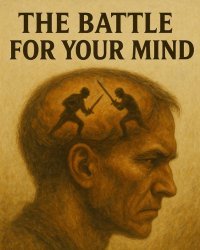 From External Events to Inner Events. We often think of “events” as things that happen out there: the traffic jam, the rude comment, the delayed email reply. But what truly shapes our experience is wh…
From External Events to Inner Events. We often think of “events” as things that happen out there: the traffic jam, the rude comment, the delayed email reply. But what truly shapes our experience is wh…How to See Your Thoughts Without Becoming the Story
 A Practical Guide to Thought-Awareness. You can spend your life inside the stories of your mind without ever learning how to see your thoughts clearly and objectively. Most of the stuff we tell oursel…
A Practical Guide to Thought-Awareness. You can spend your life inside the stories of your mind without ever learning how to see your thoughts clearly and objectively. Most of the stuff we tell oursel…The Collison Decision Matrix - A Simple Framework for Better Choices
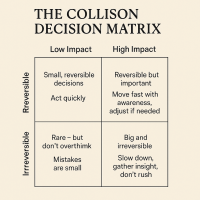 The Collison Decision Matrix Is A Practical Everyday Thinking Tool. Most of us spend a surprising amount of time worrying about decisions. From small ones such as what to wear, what to eat, what to te…
The Collison Decision Matrix Is A Practical Everyday Thinking Tool. Most of us spend a surprising amount of time worrying about decisions. From small ones such as what to wear, what to eat, what to te…The Power Of Asking The Right Question
 The Power Of Asking The Right Question Lies In The Quest For Insight. To experience the power of asking the right question you must develop the practice of asking questions. The best way to improve th…
The Power Of Asking The Right Question Lies In The Quest For Insight. To experience the power of asking the right question you must develop the practice of asking questions. The best way to improve th…Site Pathways
 Here is a site pathway to help new readers of Zen-Tools navigate the material on this site. Each pathway is based around one of the many key themes covered on this site and contain a 150 word introduc…
Here is a site pathway to help new readers of Zen-Tools navigate the material on this site. Each pathway is based around one of the many key themes covered on this site and contain a 150 word introduc…How To Live With Contradiction - Beyond Thought Let Stillness Speak
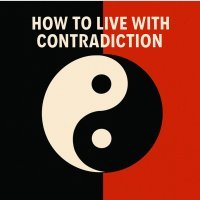 A major impact on so many peoples' lives is the situational contradiction of unfilled realistic expectations. So where does all this leave us? Well here we are, with mental equipment that is more lim…
A major impact on so many peoples' lives is the situational contradiction of unfilled realistic expectations. So where does all this leave us? Well here we are, with mental equipment that is more lim…How To Trust The Process Of Mindfulness - Right Now
 In mindfulness, the process isn’t some distant goal — it's what is happening right now. When we talk about how to trust the process of mindfulness the credibility of the process is heavily dependent…
In mindfulness, the process isn’t some distant goal — it's what is happening right now. When we talk about how to trust the process of mindfulness the credibility of the process is heavily dependent…Inner Mastery For Outer Impact - Mental Clarity For Effective Action
 Insights only matter if they translate into consistent action. In a world crowded with quick fixes and motivational soundbites, the theme “Inner Mastery for Outer Impact” calls us to something more e…
Insights only matter if they translate into consistent action. In a world crowded with quick fixes and motivational soundbites, the theme “Inner Mastery for Outer Impact” calls us to something more e…The Wise Advocate - Helping You Achieve The Very Best Outcome
 The focus of your attention in critical moments of choice either builds or restricts your capacity for achieving the best outcome. When we talk of 'The Wise Advocate' its easy to think of the consigl…
The focus of your attention in critical moments of choice either builds or restricts your capacity for achieving the best outcome. When we talk of 'The Wise Advocate' its easy to think of the consigl…Trust The Process - Beyond The Cliche
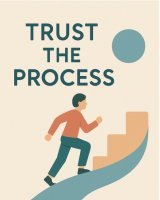 The phrase "trust the process" has become a cliche, the woo-woo mantra of the "self help" industry. Those three little words feel like they ought to mean something useful but hidden behind them are a…
The phrase "trust the process" has become a cliche, the woo-woo mantra of the "self help" industry. Those three little words feel like they ought to mean something useful but hidden behind them are a…The Dopamine Delusion - Why Anticipation Beats Achievement
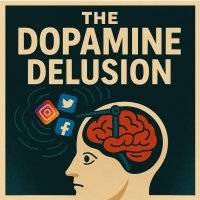 The thrill we feel is not in the having, but in the wanting. The more we have, the more we want. The more things we acquire and the easier things get for us, the more discontent we feel. The more spo…
The thrill we feel is not in the having, but in the wanting. The more we have, the more we want. The more things we acquire and the easier things get for us, the more discontent we feel. The more spo…